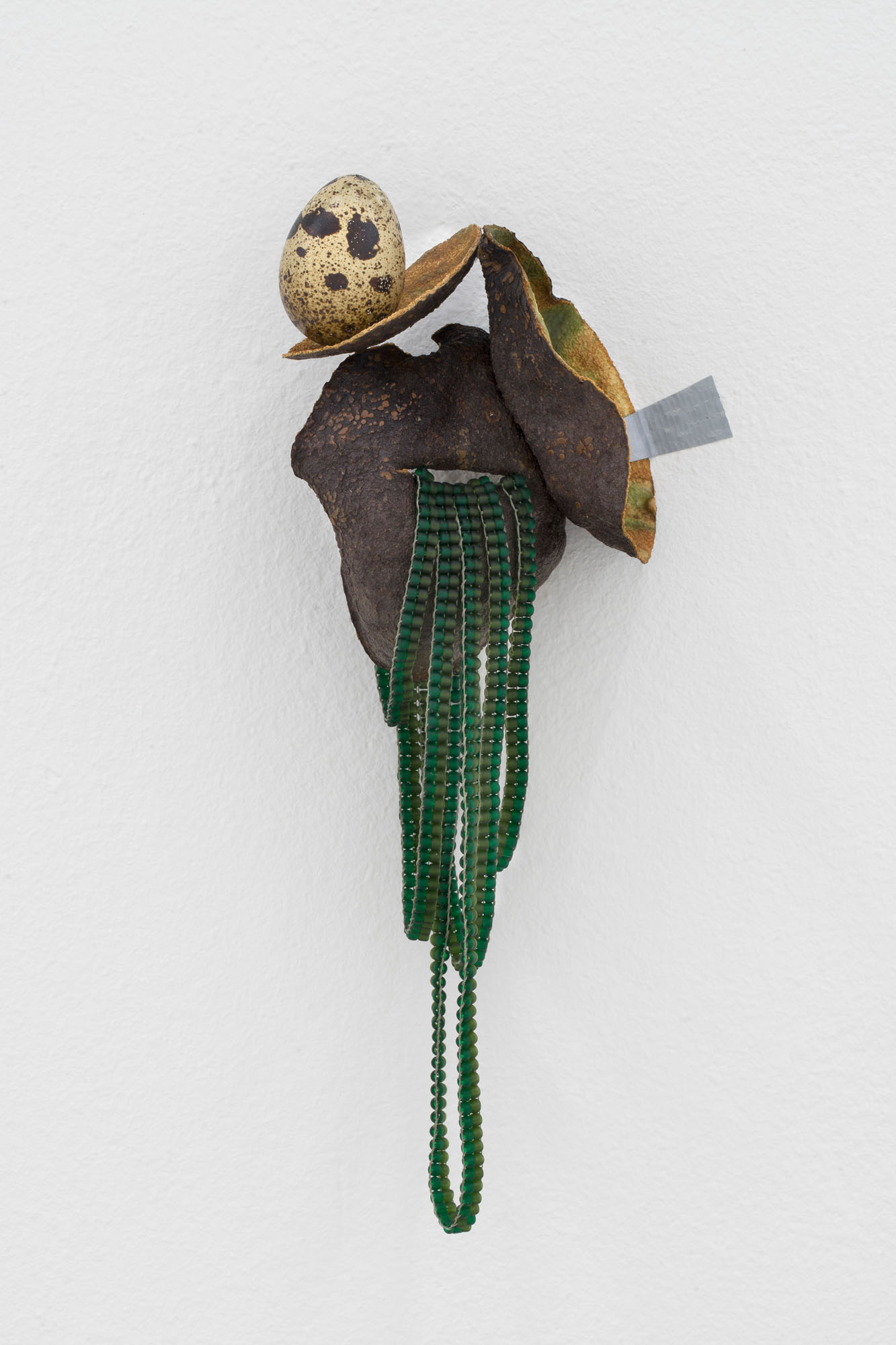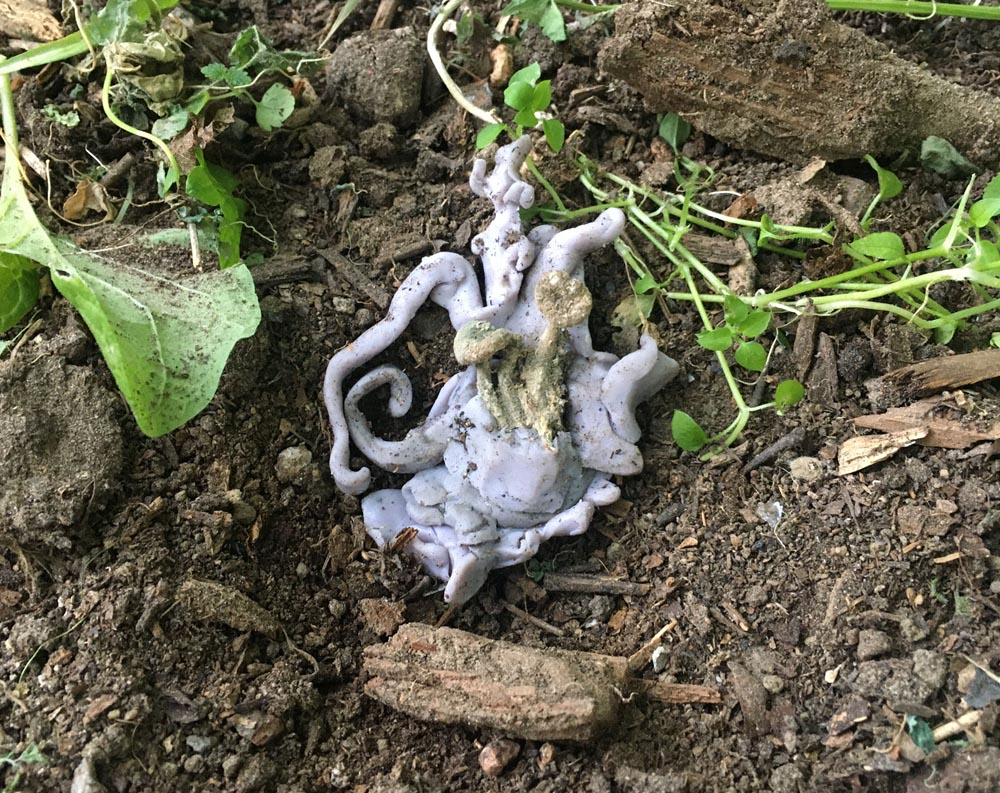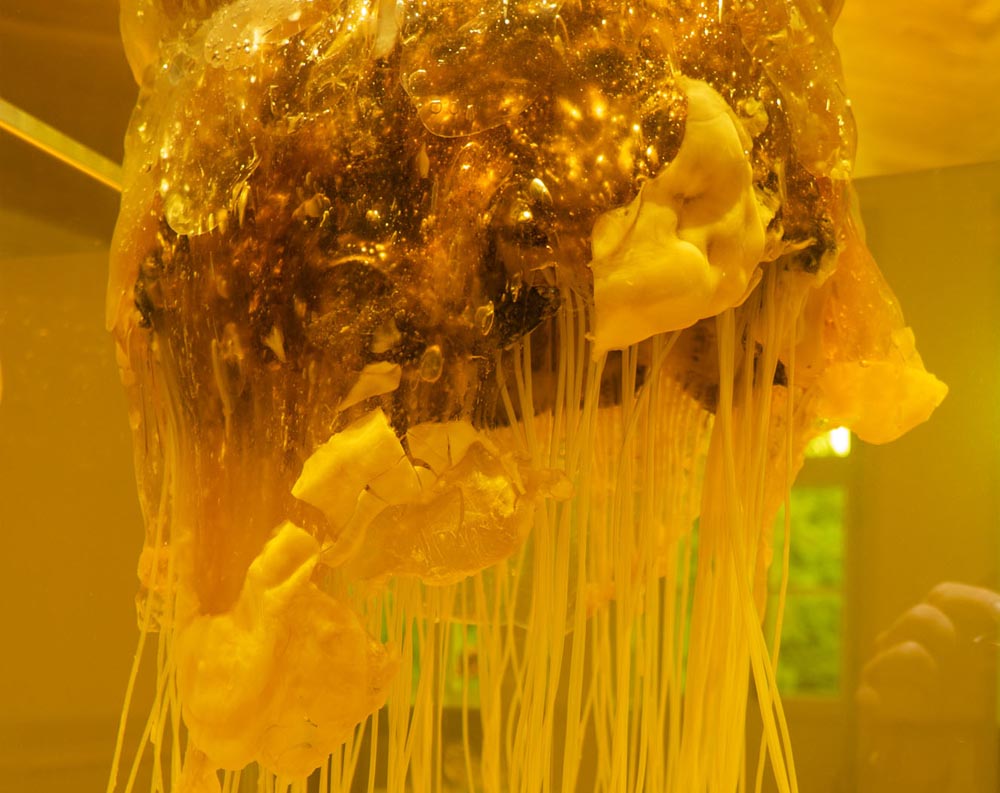OFLUXO
The Weakest Nest Robber
David Fesl
At Karlin Studios, Prague, The Czech Republic
June 25 – August 16, 2020
The exhibition The Weakest Nest Robber takes us to the environment consisting of multiple environments, multiple objects and multiple events, the real ones as well as the unreal, while the environments themselves are not indifferent but rather generate a multi-inclusive empire that causes the observers to shrink while increasing possibilities of the observed. At the same time, it allows the situation, which is clearly gallery-based, to be perceived, to view the exhibition space in its entirety, where its windows take us to various (un)realities and the exhibited objects take us to different ones. The viewer moves along the wall, alternately very close to it and slightly away from it; the author ́s place is in the center, closer to the windows, he is not visible, though. We let our imagination run wild and see his infinite but well-arranged table and the materials and fragments of objects laid out on it with a flair for freedom, thus pointing out their differences as well as their common points.We also try to deduce his sensible and gentle touches, long observations, tiny movements and skillful finesse with which he changes the materials lying there into representatives of artificially or organically alive forms of various cultures, times and biotopes. The exhibition of David Fesl remains classic while escaping the criteria, the same way his objects tend to, inspired by the nests of miscellaneous creativity under water, in the treetops, at the jewelry workshops on the island of Nisyros, at the typewriters, in the biotechnology labs. The author has both the characteristics of a visual artist and a writer – this exhibition’s creation process resem- bles the act of writing a novel. However, don’t expect the autonomous frailty maintained by the care in an enclosed space; the gentleness of the robber is an intentional admission and at the same time a reference to the coarseness of his colleagues. If you are lucky enough or manage to come at the right time, you will be walked through the exhibition by twins in multiple-characteristic costumes who will interpret ontologies of the elements for you, which they will weave into promising micro-histories.
During the exhibition there will also take place the launch of a new record Year Insane by Tomáš Kopáček (Black Tar Jesus).
-Edith Jeřábková
***
bats on the gallery walls
tend to be checked out,
they are drying their wings turned to the walls, they fitted their backs with masks decorating themselves as colourfully as if they came from the realm of insects. they feel good and they’re snapping their prosthetics made of luxurious plastic, dried up fragments of nature, shiny metals. i wonder what would king rudolf II have to say about them, if he, let’s say, understood this era? their experience with transmutations might have brought them as close to hybrid communities as we are now. bats keep a similar distance from each other as they keep from the ground, they keep steady tension among themselves, the ground and the aerial space. the gallery is a transformer substation, it is a hatchery where the newly created species are waiting to be dry. mass production of cloned beings has opened its door to binary fission of entities again, how many times has it already been! the species we are looking at are fragile, yet they have a great will for sharing, transformation and exchange. they are our hope and they enable us to polish down the monocultures of clones. some of them have a creator, but they are able to exchange body parts, their sense organs among themselves, and take over characteristics and abilities. sometimes, when we feel like it, we enjoy multi- plying and mating. we have learned not to insist on the compactness of our human bodies, we are like jewels that have gone beyond their decorative purpose. we are united by our differences, not our sameness. we don’t know who of us was created and who was born, the origin is not an important piece of information, the ontology makes sense only when it comes to establishing the narrative, it doesn’t construct our identity, though. we don’t die, we just transform, creation-wise as well as biologically. we activisticaly enter the laboratories of clones, save the botched individuals and change information in their tissues. we change their repetitive sadness into emotional variety. if you look away from the wall and look out of the windows, you will see your world, the one that was here before us. if you walk out and we join you, you will experience new sensations and impulses. at first you will feel astonished and overwhelmed, but soon it will become your normal way of perception which will help you find your ground in the reality of mixed relations. reach into your pocket and you will find a few remnants of fallen-off, found, bought, gifted, created by you and stolen items. they will tell stories through you, the stories you didn’t even know were yours. one of the stories tells us about a jeweller who heals reproduced masses with gentle esthetic joins. these joins are fragile and delicate, yet cohesive due to the adaptation of the shaped contact spots. pockets of the jeweller are always full of familiar as well as strange materials, tiny things that are precious and worthless in themselves. he combines their chemical intentions like a herbalist, he watches them flirt and doesn’t suppress their charms. they express themselves by beauty, he communicates with them by intuition. sometimes it happens, though, that he loses his balance, thus leaving his works undone for a long time, he doesn’t seem to perceive their interconnection, their yearning to be merged together. he spends hours staring at the undone bodies that don’t make any sense. then suddenly a piece of peel falls down and that’s when different constellations begin to originate which starts the accumulation process. after hours of precise and fluent work, the jeweller is finished, he walks around the room and feels the shiver of bats’ wings. they keep moving all so slightly across the wall. soon they will fly away, but for now they’re still sitting under the pipe of gallery technology. they record stories gained by evolution into it and then send them away into the space behind the wall. when the jeweller duplicates himself, you can hear bits and pieces of their stories and it can also occur that the bats fly away at once and the exhibition will end and there will be nothing left for you to do, but to leave and search your own pockets.
-edith jeřábková




















OFLUXO is proudly powered by WordPress


